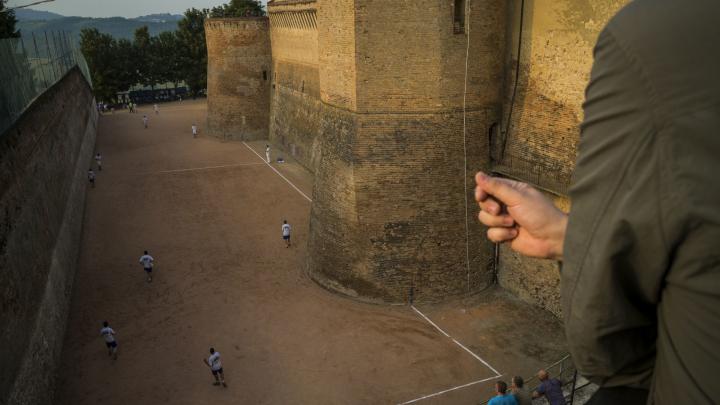Piedmont, the land of sport and traditions, thanks to the practice and spread of two sports that have originated in the past centuries, keeps this partnership alive: fist ball game ‘pallapugno’ and the tambourine ball game ‘pallatamburello’.
Pallapugno
Its progenitors are the "follis" and the "ludere espulsim" of the Romans, which, as it is known, consisted in striking a ball with the fist; the first written rules date back to 1555, with the treatise dedicated to Alfonso d'Este da Scaino from Salò. For many centuries, it was the "National Sport" that thrilled commoners and nobles and was played under the walls of the cities, using a "wooden bracelet" to strike the leather ball; many Italian towns recall the ancient roots of this sport. In Torino, there is the "Balon" area.
The F.I.P.A.P. (Italian Federation of Pallapugno), recognised by C.O.N.I. in 1982, has the goal of bringing the Pallapugno back to the place it deserves in the framework of Italian sports.
The Italian Team has been the world champion in 2004 and the European Youth Champion in 2015. FIPAP teaches Light Pallapugno in 18 regions, which is now also an agonistic discipline with its national championships.
Pallatamburello
The year zero of the official tambourine sport was 1980: in fact, that year was characterised by the recognition of tambourine, as a game, by the Italian Federation of Gymnastics, which - the Olympic Committee will be established later, only in 1908 – governed at that time the official aspects of sport in our country. Mentions of games with a ball hit with ”parchment" tools, with a wooden frame, appear sporadically in the sixteenth and seventeenth century, especially in Tuscany and Rome, but around the middle of the last century tambourine begins its agonistic history.
Img credits: ©Alex Webb/Magnum Photos: Moncalvo (AT), Tamburello (medieval sport game)

